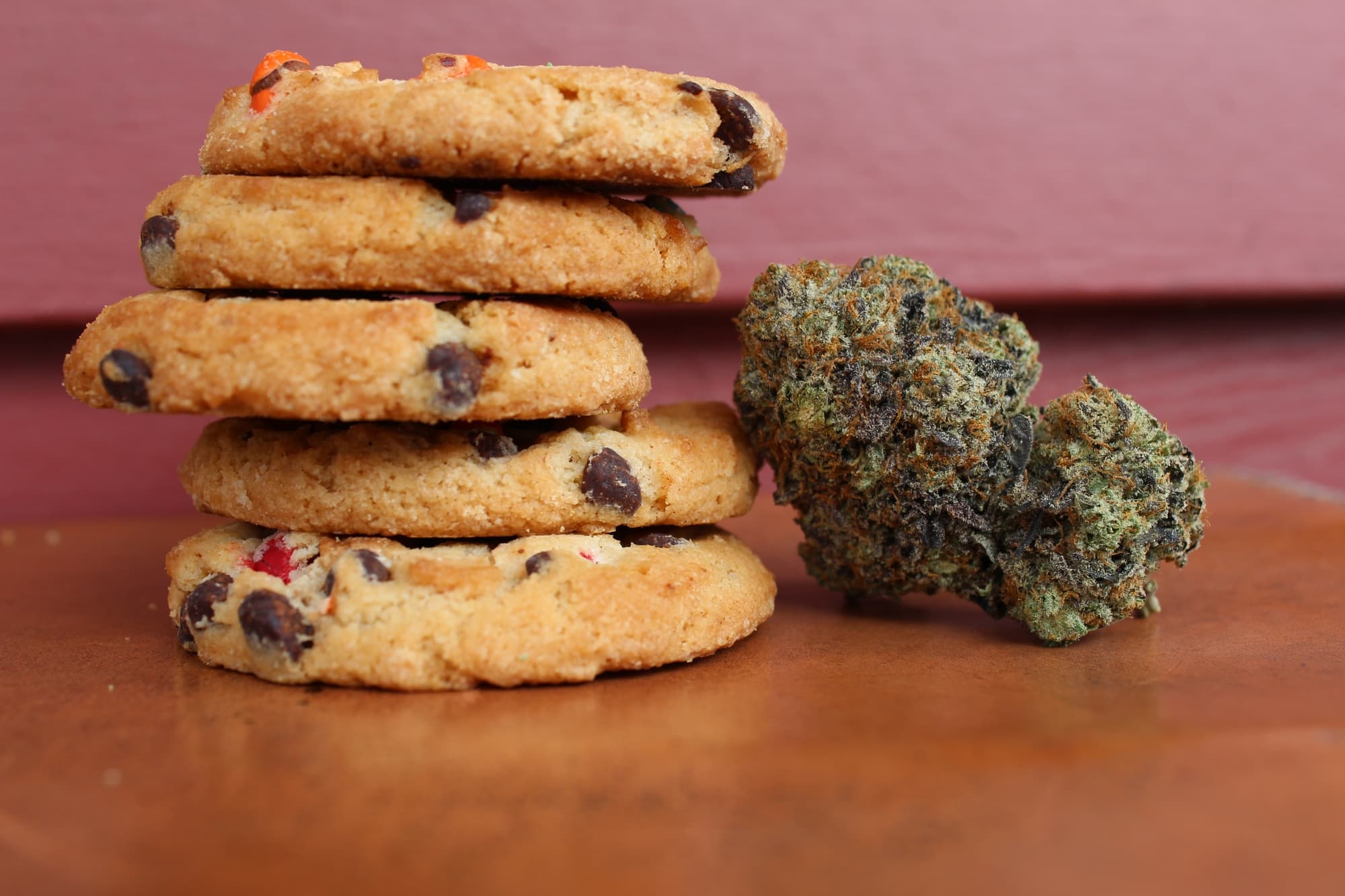Cooking with cannabis is becoming more and more popular, with shows on Netflix and ViceTV such as Cooked with Cannabis and Bong Appétit, and restaurants developing and offering infused meal kits during the pandemic. However, the history of culinary cannabis use began long before your first experience with a ‘special’ brownie. It can be traced all the way back to ancient times, and it starts off with a Bhang.
Bhang is a drink that originated in ancient India, the earliest written reference dates back to ca. 2000-1400 BC. Used in celebration and religious ceremony, the concoction was created by grinding the buds and leaves with a mortar and pestle into a paste, which was formed into a ball and allowed to dry. It was then mixed with milk and ghee, strained, and flavoured with nuts, spices and sugars. Though consuming cannabis was popular throughout India, methods of doing so were determined by the caste system that divides Hindu society. Higher castes more commonly consumed Bhang, but the lower caste systems had their own brew, called Ganja, which was made from the flowering tops of female cannabis plants. Harvard Medical School psychiatrist and cannabis researcher Lester Grinspoon mused that the difference between ganja and bhang is similar to that between beer, the drink of commoners, and fine single-malt scotch, a liquor for elites.
In Morocco, the tribe known as the Berbers developed their own indulgence, known as Majoun. Used for centuries, this treat was used to aid in meditation practices and as a method of self-healing. Traditionally, Majoun is made with the kief (accumulated trichomes sifted from cannabis flowers through a sieve) combined with shake (bits of leaves, stems, or segments of the plant that fall off the larger buds). This is then combined with nuts, dates and spices and rolled into a ball. Majoun became popular among American creatives of the Beat Generation, with many writers such as William S. Boroughs being inspired by binges on hash treats. More recently, Anthony Bourdain makes Majoun in Tangier, during episode 5 of the CNN series Parts Unknown.
In the country of Georgia, an ancient community called Svan cultivated cannabis and enjoyed it in a variety of useful ways. They used the fibers for cloth and rope, and pressed the seeds for oil, but they also infused a variety of dishes such as veggie-walnut spreads, meat pies, and cheese bread, called Khachapuri, which is native to Georgia. Historian Mevluti Charqseliani recalls in an interview with the Atlas Obscura the traditions surrounding cannabis-infused meals, which were an important part of funeral banquets and the processing of death and grief. The current political battle over the legalization of cannabis in Georgia is seen as far more than the simple right to recreational cannabis, it is about the Svan community’s preservation of this important tradition.
One of the earliest recorded uses in Europe can be found in a 15th century cookbook, called De Honesta Voluptate et Valetudine or, “Of Honest Voluptuousness and Health“. Written by fifteenth-century Italian scholar Bartolomeo Platina, a member of the Pope Pius II’s College of Abbreviators. The cookbook features a ganja recipe, which (translated from Latin) reads as follows:
“To make cannabis yourself more commonly used as flax for thread, use a mallet to crush clods [buds] collected after a good harvest. Add cannabis to nard oil in an iron pot, crush together over some heat and liquefy into a health drink of cannabis nectar. Carefully treat food and divide for the stomach and the head. Finally remember everything in excess may be harmful or criminal.”
Bartolomeo Platina was later put in charge of the Vatican library, although he gives most of the credit to Martino da Como who was considered to be the greatest chef of his day, responsible for preparing the food at a papal college on the Adriatic coast, before being transferred to Rome where he became the Pope’s personal chef.
In more recent times, the legendary pot brownie first appeared in a cookbook called, The Alice B. Toklas Cookbook, published in 1954. Alice Toklas was the life partner of Gertrude Stein, a famous American author, and their social circle included many important figures of the early 20th century, including Picasso, Matisse, and Hemmingway. It is interesting to note that her recipe included the whole plant and that the mixture, which contained nuts, fruits, and spices, has a striking similarity to recipes for Bhang and Majoun and was not baked. Tellingly, the recipe itself was given to her by her friend Brion Gysin, a leading member of the Beat Generation, who lived in Morocco in the early 1950’s. It would be hard to miss the connection between recipes. In 1968, the film I Love You Alice B. Toklas would draw inspiration from Alice and her cookbook, telling the story of an encounter of a young man with a beautiful young hippie woman and her pot brownies that changes the course of his life.
Today, the rise of the edibles market is indicative of the persevering popularity of consuming cannabis through food. In 2012, a Mongolian Barbecue restaurant called Earth Dragon Edibles opened in Ashland, Oregon. Though a medical marijuana card was required to get in the door, the idea proved popular, and shortly thereafter the popular New York pizzeria Roberta’s staged a secretive marijuana feast that was reported in GQ magazine. The gala meal included marijuana-based cocktails, a salad with pumpernickel-weed croutons, and bluefish seasoned with marijuana oil in a weed-yogurt sauce. Two types of pizza featured hempseed dough and pot pesto. There are long-running websites devoted exclusively to cannabis cuisine recipes, like Good and Baked, or companies like The Herbal Chef, which offer meal prep kits, and chefs who put on full scale events and dinner parties serving laced meals. Interest and demand continues to grow for creative ways to ‘get your greens’, marijuana-based edibles are a booming culinary genre that has its roots deep in history.
© Kanab Inc. – Kanab Inc. is a Toronto based cannabis retail company that honors the historical significance and uses of the cannabis plant across cultures and civilizations. Kanab has now opened its first cannabis dispensary at the intersection of Don Mills Road and York Mills Road in North York region of Toronto, Ontario (South of 401, West of 404 / Don Valley Parkway, and East of Leslie). For more info, please visit: kanab.ca






